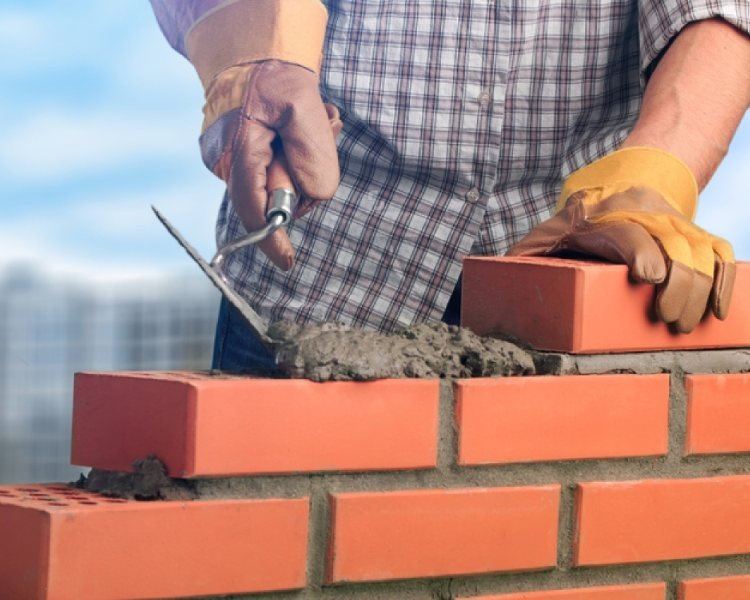Unlocking the Keys of Sustainable Stonework Building Practices for Eco-Friendly Buildings
Among the myriad approaches to environment-friendly structure, sustainable masonry construction stands out as a time-tested and long lasting method that holds a wide range of untapped capacity. From the option of materials to ingenious building and construction strategies, the secrets to achieving sustainability within masonry building are diverse and appealing.
Benefits of Sustainable Masonry Building
Welcoming sustainable masonry building techniques not just reduces ecological effect but additionally provides long-term financial benefits to builders and neighborhoods. By making use of materials like recycled blocks, blocks, and stones, contractors can significantly decrease the carbon impact of their jobs while promoting source efficiency. Additionally, lasting stonework building methods, such as correct insulation and thermal mass residential or commercial properties, can enhance energy efficiency within structures, resulting in decreased functional costs with time.
Additionally, the longevity and resilience of stonework frameworks add to long-term financial advantages. Buildings built making use of sustainable stonework techniques typically call for much less maintenance and repair, equating to cost financial savings for home builders and homeowner. The longevity of masonry products additionally guarantees that structures continue to be secure and safe and secure, reducing the requirement for constant renovations or replacements.
Eco-Friendly Masonry Materials
Making use of environment-friendly stonework products is a critical step towards improving the sustainability of building methods and decreasing ecological influence while taking full advantage of lasting financial advantages. Lasting stonework products are sourced, generated, and made use of in a fashion that decreases general environmental effect. Materials such as recycled bricks, recovered rock, and lasting cinder block are ending up being increasingly popular choices for eco-conscious contractors. Recycled blocks, for instance, not only divert waste from garbage dumps however likewise require less energy to produce contrasted to brand-new blocks. Recovered stone uses a special visual appeal while reducing the demand for brand-new quarrying. Sustainable concrete blocks include recycled accumulations and may feature better insulation homes, adding to power performance in buildings.
In addition, natural products like adobe, rammed earth, and straw bundles offer exceptional thermal mass residential or commercial properties, reducing the requirement for heating and cooling down energy. These products are frequently in your area available, promoting local economies and lowering transportation-related carbon emissions. By picking environment-friendly stonework materials, building and construction projects can dramatically decrease their ecological impact and add to the production of healthier, much more lasting built atmospheres.
Energy-Efficient Stonework Techniques
Energy effectiveness plays an important duty in boosting the sustainability of masonry building methods. By carrying out energy-efficient masonry methods, home builders can significantly decrease the general power intake of a structure, leading to lower functional costs and sika concrete a smaller environmental footprint. One essential energy-efficient masonry method is the usage of thermal mass, which entails integrating thick products like concrete or block right into the structure's framework to soak up and save warmth. This aids regulate indoor temperatures, decreasing the need for mechanical heating and cooling systems.

Advancements in Lasting Stonework
Current improvements in lasting masonry methods have actually produced innovative methods that are improving the construction industry. One such advancement is the development of self-healing concrete, which makes use of microorganisms embedded within the concrete to recover splits autonomously. This advancement not just reduces maintenance expenses yet also improves the resilience of stonework frameworks, adding to their sustainability.
Another remarkable advancement is the usage of recycled aggregates in stonework construction - masonry contractor. By integrating materials such as smashed ceramic Read More Here waste or recycled glass right into concrete blends, building contractors can reduce the environmental impact of building jobs while preserving architectural honesty. This technique not just draws away waste from land fills but also conserves natural resources, making it a key development in sustainable masonry building
Furthermore, the integration of digital design tools, such as Structure Details Modeling (BIM), is revolutionizing the way masonry frameworks are prepared and built. BIM permits more exact computations, minimized material waste, and enhanced energy effectiveness, inevitably resulting in more lasting structure methods. These advancements collectively represent an appealing future for sustainable masonry construction in the era of environmentally friendly buildings.
Future Trends in Stonework Sustainability
With the cutting-edge strides made in lasting masonry practices, the future fads in stonework sustainability are poised to further revolutionize the building and construction market. One of the key fads shaping the future of masonry sustainability is the boosted combination of here technology. Advancements such as Structure Info Modeling (BIM) and virtual fact simulations are being used to optimize stonework building and construction procedures, leading to minimized material waste and boosted energy performance in structures.
Moreover, the development of novel lasting materials is readied to play a considerable duty in improving the eco-friendliness of stonework building. masonry contractor. Innovations like self-healing concrete, recycled aggregates, and bio-based binders are gaining traction for their capability to minimize environmental influence while maintaining architectural honesty

Verdict
In conclusion, sustainable stonework construction techniques provide countless benefits for green structures. By making use of green materials and energy-efficient techniques, stonework can add to an extra sustainable developed environment. Advancements in sustainable masonry are continuously being developed to better boost the ecological performance of structures. Looking towards the future, the trend of stonework sustainability is anticipated to grow, causing more eco-friendly and energy-efficient building and construction practices in the years to find.